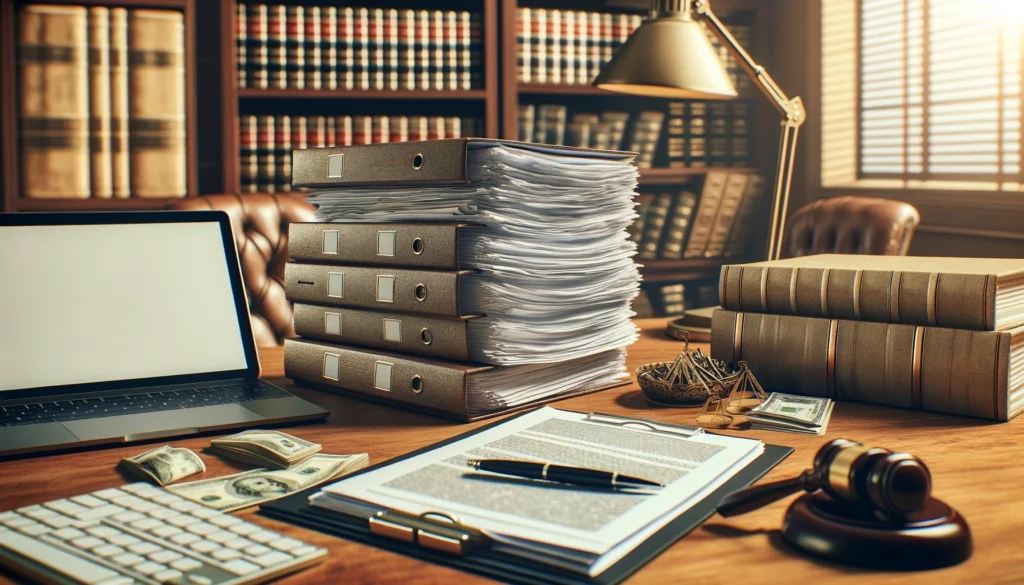
The Tidal Wave of Information in Personal Injury Law
The ever-expanding tide of legal information can leave even the most experienced paralegals in personal injury law feeling overwhelmed. Between staying abreast of new case law, navigating complex statutes, and researching intricate medical terminology, efficiently conducting case research can feel like a constant battle against the clock.
However, a new wave of technology is cresting the horizon, promising to revolutionize the way paralegals approach legal research. Large Language Models (LLMs), with ChatGPT being a prominent example, are rapidly evolving into powerful tools that can streamline research workflows and empower paralegals to become more effective. By leveraging the capabilities of these AI-powered assistants, paralegals can reclaim valuable time, improve the accuracy of their research, and ultimately, strengthen the foundation for a winning personal injury case.
In the following sections, we’ll delve deeper into the world of ChatGPT and LLMs, exploring their strengths and limitations in the context of personal injury law research. We’ll then equip you with a practical toolkit of prompt engineering techniques designed to maximize the effectiveness of your LLM interactions. Finally, we’ll showcase real-world applications, demonstrate advanced prompting tactics, and explore the exciting future of paralegal research empowered by AI.
Understanding ChatGPT/LLM Capabilities and Limitations
ChatGPT and similar Large Language Models (LLMs) have captured the imagination of the legal world with their remarkable ability to understand and respond to prompts in a way that mimics human communication. These LLMs are trained on massive datasets of text, code, and other information, allowing them to grasp complex legal concepts, translate jargon into plain language, and generate summaries of lengthy documents.
Capabilities of LLMs in Personal Injury Research
- Understanding Context: LLMs excel at parsing complex legal documents and extracting key information, providing paralegals with quick summaries of cases, statutes, and other resources.
- Translating Legalese: Medical terminology and legal jargon can be simplified, aiding comprehension.
- Identifying Relevant Information: LLMs can pinpoint precedents, regulations, and other materials pertinent to a given case.
Limitations to Consider
- Potential for Bias and Inaccuracy: Since LLMs are trained on existing data, they can inherit biases or perpetuate errors present in that information.
- Lack of Deep Understanding: While LLMS can mimic human communication patterns, they don’t possess the genuine legal reasoning skills of an attorney or experienced paralegal.
- Case Specificity: LLMs may not always grasp the nuances of individual cases and the interplay of specific facts and legal principles.
Understanding these limitations is critical to harnessing the power of LLMs responsibly. It’s essential to remember that LLMs are sophisticated tools, not a replacement for legal professionals. Fact-checking, human judgment, and the critical eye of a paralegal remain indispensable for ensuring the accuracy and validity of research results.
Up next, we’ll dive into the heart of effective communication with LLMs: the art of prompt engineering.pen_sparktunesharemore_vert
Also read:
Prompt Engineering for Optimal Results
Mastering the art of prompt engineering is akin to learning a new language – the language of AI interaction. By crafting clear, specific, and well-structured prompts, paralegals can unlock the full potential of ChatGPT and other LLMs in their research. Here are key strategies to refine your prompts:
Clarity and Specificity
- Avoid Ambiguity: Vague queries like “Find me information on negligence” will lead to generic results. Instead, provide context: “Find cases relevant to slip-and-fall accidents in grocery stores within [jurisdiction], specifically addressing the store’s duty of care.”
- Provide Details: Include key facts, legal terms, and even document names to focus the LLM’s search.
Iterative Refinement
- Start Broad, Then Narrow: Begin with an initial inquiry to get an overview of the legal landscape, then use subsequent prompts to drill down on specific aspects.
- Example: Start with “What are the elements of medical malpractice in [state]?” then follow up with more targeted questions about informed consent or the standard of care.
Utilizing Documents
- Feed the LLM information: Upload deposition transcripts, medical reports, or legal briefs and ask the LLM to summarize key points, identify potential inconsistencies, or translate complex terminology.
Additional Tips
- Experiment with phrasing: Rephrase prompts that yield unsatisfactory results.
- Provide Examples: A few examples can illustrate the desired output format.
In the next section, we’ll demonstrate how these prompt engineering principles translate into real-world applications for personal injury cases, streamlining your research and saving precious time.
Also read:
Real-World Applications
Let’s move from theory to practice and illustrate how ChatGPT and LLMs can transform your day-to-day personal injury research tasks. Here are some powerful, real-world applications:
Case Precedent Research
- Finding Similar Cases: “Find cases similar to [brief case summary] with rulings in favor of the plaintiff, focusing on premises liability.”
- Pinpointing Key Holdings: “Summarize the key legal holdings and reasoning in [case name].”
Statutory and Regulatory Analysis
- Navigating Complex Laws: “Explain the relevant sections of the [state] Workers’ Compensation Act regarding eligibility for permanent disability benefits.”
- Staying Updated: “Are there any pending amendments or recent case law interpretations affecting [specific statute]?”
Medical Terminology and Expert Reports
- Demystifying Jargon: “Translate the following medical terms from this doctor’s report into plain English.”
- Spotting Potential Weaknesses: “Analyze this expert witness report for potential methodological flaws or inconsistencies that could be challenged on cross-examination.”
Drafting Assistance
- Generating Initial Drafts: “Draft a set of interrogatories addressed to the defendant regarding their insurance coverage and policy limits.” (Emphasize: Thorough review by an attorney is essential)
Important Reminder: LLMs are powerful tools, not replacements for legal expertise. Always verify the information provided, apply your legal knowledge, and ensure all work aligns with ethical guidelines.
Now, let’s explore some advanced techniques to further enhance and refine your research capabilities with LLMs.
Also read:
Beyond the Basics: Advanced Techniques
Having mastered the fundamentals of prompt engineering, you’re ready to take your LLM-powered research to the next level. Here are some advanced techniques to add to your arsenal:
Comparative Analysis
- Jurisdictional Differences: “Compare and contrast the contributory negligence standards applied in [state 1] and [state 2].”
- Evolving Legal Standards: “How has the legal definition of ‘proximate cause’ changed in [jurisdiction] over the last decade?”
Hypothetical Exploration
- Exploring Alternative Outcomes: “If the plaintiff in [case name] had been partially at fault, how might the court’s decision have been different?”
- Testing Legal Arguments: “Provide potential counterarguments to the defendant’s claim of assumption of risk in [brief case description].”
Strategic Insights
- Identifying Opposing Counsel Patterns: “Analyze the past five cases handled by [opposing counsel] in personal injury matters. Identify any common strategies or argument styles.” (Note: Ensure adherence to ethical rules regarding obtaining information)
Important Note: While these advanced techniques can yield valuable insights, it’s crucial to remember that LLMs are not legal advisors. Always exercise critical judgment and consult with supervising attorneys when making strategic or legal decisions.
In our final section, let’s look at the exciting future ahead and how AI is poised to continue transforming the work of paralegals.
Also read:
The Future of Paralegal Research: A ChatGPT-Powered Transformation
The legal landscape is on the cusp of a significant transformation, with LLMs like ChatGPT playing a pivotal role. As these AI assistants continue to evolve, paralegals can expect even more sophisticated research capabilities. Imagine an LLM that can not only analyze vast amounts of legal data but also predict case outcomes, identify potential legal issues proactively, and even generate persuasive legal arguments (under attorney supervision, of course).
However, it’s important to remember that LLMs are here to augment, not replace, the irreplaceable skills of paralegals. Human judgment, critical thinking, and the ability to navigate the nuances of individual cases will remain paramount.exclamation The future belongs to paralegals who can wield the power of LLMs effectively, becoming true research powerhouses within their firms.
By embracing LLM technology and mastering the art of prompt engineering, paralegals can:
- Free up valuable time for higher-level tasks requiring human expertise.expand_more
- Enhance research accuracy by leveraging the vast knowledge base of LLMs.expand_more
- Gain deeper insights into legal issues, leading to stronger case strategies.
The future of paralegal research is bright, and ChatGPT and other LLMs are the lighthouses guiding the way. So, set sail and begin exploring the exciting possibilities this technology offers!


